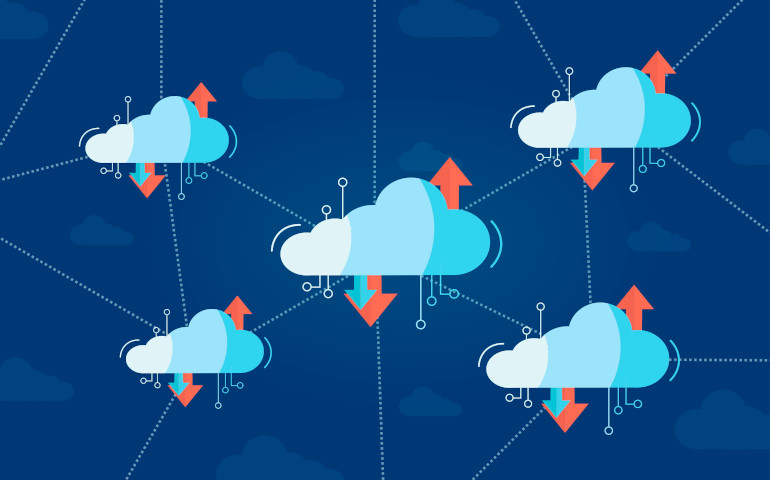Le Manifeste Agile
Suite à l'observation d'un taux d’échec élevé des projets dans les années 1990, 17 experts en développement logiciel se réunissent aux Etats-Unis en 2001 afin de mettre en commun leurs méthodes respectives. Le « Manifeste Agile » (Agile Manifesto en anglais) naît de cette rencontre et détermine les valeurs et les principes fondamentaux de la méthode Agile.
Une plus grande implication du client et une meilleure réactivité des équipes face à ses demandes sont au cœur de la méthode Agile. Ce manifeste prône les 4 valeurs fondamentales de la méthodologie :
- L'équipe, soit des individus et des interactions plutôt que des processus et des outils
- L’application, c'est-à-dire des fonctionnalités opérationnelles plutôt que de la documentation exhaustive
- La collaboration avec le client plutôt que la contractualisation des relations
- L’acceptation du changement plutôt que le suivi d'un plan.
De ces valeurs découlent les 12 principes généraux suivants :
- Satisfaire le client en priorité
- Accueillir favorablement les demandes de changement
- Livrer le plus souvent possible des versions opérationnelles de l’application
- Assurer une coopération permanente entre le client et l’équipe projet
- Construire des projets autour de personnes motivées
- Privilégier la conversation en face à face
- Mesurer l’avancement du projet en matière de fonctionnalité de l’application
- Faire avancer le projet à un rythme soutenable et constant
- Porter une attention continue à l’excellence technique et à la conception
- Faire simple
- Responsabiliser les équipes
- Ajuster à intervalles réguliers son comportement et ses processus pour être plus efficace
Fonctionnement
La méthodologie Agile se base sur ce principe simple : planifier la totalité de votre projet dans les moindres détails avant de le développer est contre-productif.
En effet, organiser tous les aspects de votre projet est une perte de temps car il est rare que tout se passe exactement comme prévu. Souvent, des aléas surviennent et vous forcent à revoir votre planification.
La méthode Agile recommande de se fixer des objectifs à court terme. Le projet est donc divisé en plusieurs sous-projets. Une fois l'objectif atteint, on passe au suivant jusqu'à l'accomplissement de l'objectif final. Cette approche est plus flexible. Puisqu'il est impossible de tout prévoir et de tout anticiper, elle laisse la place aux imprévus et aux changements.
Autre point important : la méthode Agile repose sur une relation privilégiée entre le client et l'équipe projet. La satisfaction du client étant la priorité, l'implication totale de l'équipe et sa réactivité face aux changements du client comme aux imprévus sont nécessaires. Le dialogue avec le client est privilégié. C'est lui qui valide chaque étape du projet. L'évolution de ses besoins est prise en compte et les ajustements sont effectués en temps réel afin de répondre à ses attentes.
Avec l'approche Agile, rien n'est figé. L'équipe projet doit être capable de se remettre sans cesse en cause et de chercher continuellement à évoluer.
Un exemple concret
Par exemple, vous prévoyez de vous rendre à Brest depuis Strasbourg en passant par les petites routes de campagne. Avant de partir, vous planifiez chaque détail de votre trajet en précisant le nom de chaque ville et village traversés, l'heure précise de passage, chaque rue empruntée, la quantité d'essence consommée, les kilomètres parcourus, etc. Le problème, c'est que les imprévus ne manqueront pas sur le chemin : embouteillages, travaux et déviations, voire panne de votre véhicule. Votre planification devient très vite obsolète et vous venez de perdre un temps précieux à organiser avec précision un itinéraire que vous ne pouvez pas forcément suivre. Frustrant, n'est-ce pas ?
Avec la méthodologie Agile, plutôt que de planifier l'intégralité de votre itinéraire, vous vous fixez un premier objectif à court terme, une grande ville, et vous prenez immédiatement la route. Une fois l'objectif atteint, vous prenez le temps d'analyser la situation actuelle (état de la circulation et de la voiture) et vous adaptez la suite de votre itinéraire en fonction de ces informations. Vous continuez ainsi de suite jusqu'à atteindre votre destination finale.
Avantages et inconvénients
Avantages
L'avantage majeur de l'approche Agile est sa flexibilité. Les changements du client et les imprévus sont pris en compte et l'équipe projet peut réagir rapidement.
Autre atout : la collaboration et la communication fréquente avec le client, ainsi que sa forte implication dans le projet. Une relation de confiance se tisse entre le client et l'équipe projet.
Le client dispose d'une meilleure visibilité sur l'avancement du projet et peut ainsi l'ajuster en fonction de ses besoins. Le contrôle qualité est permanent. Quant à l'équipe projet, elle peut réagir rapidement aux demandes du client.
Enfin, vous contrôlez mieux les coûts du projet car à la fin de chaque étape, vous connaissez le budget déjà dépensé et celui restant. Vous pouvez ainsi décider de poursuivre ou d'arrêter le projet si les fonds sont insuffisants.
Inconvénients
Comme le dialogue est privilégié, la méthode Agile laisse peu de place à la documentation, ce qui peut poser problème en cas de changement d'équipe projet, par exemple.
Le client doit être disponible et s'intéresser à son projet afin de s'assurer qu'il répondra parfaitement à ses besoins. Tous les clients n'ont pas le temps, ni l'envie de s'impliquer pleinement dans la réalisation d'un projet.
La méthode Agile n'est pas adaptée pour les entreprises avec une structure hiérarchique très forte à cause de son fonctionnement collaboratif.
Cette méthodologie permet un bon contrôle des coûts, mais elle rend très difficile la vision d'un budget pour la totalité du projet. La flexibilité a un coût que le client doit être prêt à payer.
En résumé
Contrairement à la méthode traditionnelle waterfall, l'approche Agile offre une plus grande flexibilité et une meilleure visibilité dans la gestion du projet. A notre époque où la personnalisation est si importante, cette méthodologie fait de plus en plus d'adeptes.




